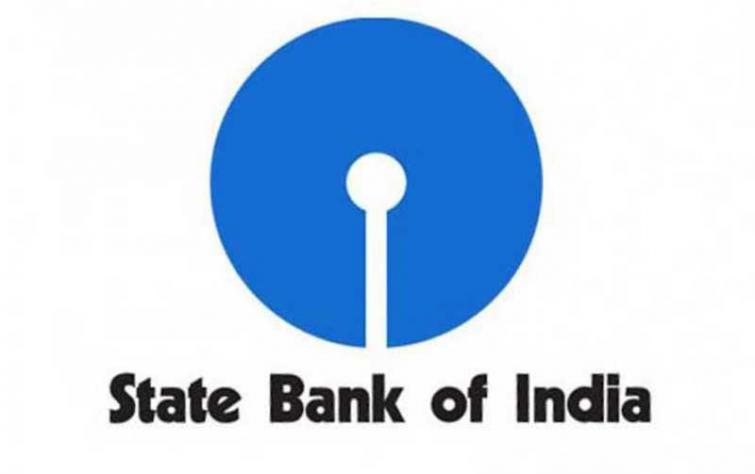 Economy
Economy SBI Ecowarp report: First rate hike likely in June policy meet; Cumulative 75 basis points expected through the cycle
New Delhi: CPI inflation surged to 6.95% on yearly basis in Mar’22 as compared to 6.07% in Feb’22 mainly on account of food price inflation.
Inflation prints are now likely to stay higher than 7% till September. Beyond September, inflation prints could hover between 6.5%-7%.
Our FY23 inflation forecast is now closer to 6.5%, taking into account the possibility of an extended food price shock.
The Russia-Ukraine conflict has significantly impacted the trajectory of inflation.
The latest March’22 inflation print shows wheat, protein items (chicken in particular), milk, refined oil, potato, chillies, kerosene, firewood, Gold and LPG contributing to overall inflation in a substantive manner.
The conflict has pushed up prices of chicken abruptly as chicken feed imports from Ukraine are getting disrupted.
The pressure on sunflower oil supplies from Ukraine has led to change in export policy from Indonesia, thereby leading to lower palm oil imports.
Further, the war has exacerbated crop loss concerns in South America which in turn has impacted soybean oil supplies.
Milk, Refined Oil prices have also jumped significantly. Surprisingly, the contribution of petrol and diesel in overall inflation has been declining steadily since Oct’21, while there is a steady increase in weighted contribution of kerosene and firewood in headline inflation.
There is also a decline in weighted contribution of LPG in headline inflation.
It seems that fuel consumption has been declining even before the omicron had set in and the trend to alternate sources of fuel like kerosene and even firewood may have gathered momentum and will possibly gather further traction in coming days. This does not augur well for rural demand.
We have already taken the impact of this pass through of WPI food inflation to CPI food inflation while estimating our average CPI of 5.5%-6% (oil price of $95-$100 per bbl).
However, there is an additional factor that could lead to further upside risk to inflation in the next fiscal year. There has been an increase in prices of various inputs used in agriculture.
The cost of production is likely to increase by around 8-10%. Thus, CACP will have to take this higher cost of production into account while estimating minimum Support Price (MSP) for FY23.
Generally, the recommended MSP is calculated as 150% of the cost of production (A2+FL). MSP increase has been in the range of 3-5% in the past. In FY23, MSP should at least be higher by around 12-15%.
As per our estimates, inflation is likely to remain above 7% in H1 and 6.5% in H2.
US inflation is expected to hit 6.6% over the next year, according to the New York Fed's survey in March.
Fed officials reached a consensus at their March meeting that they would begin reducing the central bank balance sheet by $95 billion a month.
The Federal Reserve is therefore expected to deliver two back-to-back half-point interest rate hikes in May and June to tackle runaway inflation.
Historically, at the lowest end of the spectrum, the spread between the Repo and G-sec hovers around 250 basis points. In an interest rate hardening cycle, the spread vaults up to 350 points. 10-year Benchmark yields should thus move towards 7.50%, even with the current repo rate at 4%.
We now expect a 25 basis point rate hike each in June and August, with a cumulative rate hike of 75 basis points in the cycle. Given that the spread between G-sec yields and repo rate jumps in an increasing interest rate cycle, G-sec yields could touch 7.75% by September.
We believe, RBI will keep the G-sec yields capped at 7.5% through unconventional policy measures.
The current jump in yields also has to do with the RBI circular on Friday. In principle, in order to make SDF attractive and to bring it on par with Reverse Repo facility as far as maintenance of SLR is concerned, RBI has made deposits parked under SDF an eligible asset for the maintenance of SLR.
Thus, from Bank’s point of view, SDF facility offers higher return without compromising on maintenance of statutory ratio and risk exposure being minimal (counterparty being the central bank). As the funds parked under SDF are eligible to be reckoned for SLR, we do not envisage introduction of this facility to lead to any incremental demand for SLR securities.
This could mean yields in uncharted territory if the RBI does not cap it. As expected, technically speaking a move to 7.5% and beyond for G-sec yields could be swift and rapid as being witnessed right now.
The recent spike in benchmark yields lays bare the growing disconnect, and divergence between benchmark yields and bank lending rates, with banks entering a new territory where lending rates are now effectively lower than yields, thereby taking the sheen off risky lending for banks.
Also, as and when benchmark rates start rising, the effective yield may spike further, a disincentive ensuring demand degrowth from corporates for proposed capex.
As banks would be forced to enhance the lending rates, aligning it with the market-determined course (with NBFCs following suit with a mark-up), the effects on the economy can be destabilising.
The good thing is that we have also seen substantial increase in new investment announcements which were around Rs 10 trillion in the last two years, increasing to a record high of around Rs 19 trillion in FY22.
Support Our Journalism
We cannot do without you.. your contribution supports unbiased journalism
IBNS is not driven by any ism- not wokeism, not racism, not skewed secularism, not hyper right-wing or left liberal ideals, nor by any hardline religious beliefs or hyper nationalism. We want to serve you good old objective news, as they are. We do not judge or preach. We let people decide for themselves. We only try to present factual and well-sourced news.







